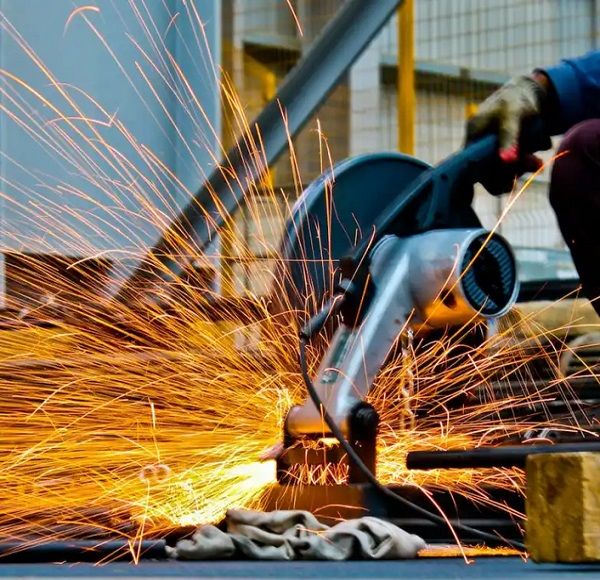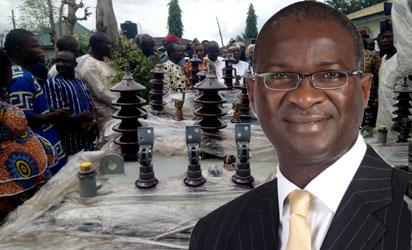Having the right electrical equipment is essential for any construction project. Your choices during this process can impact the project’s overall success. But where do you start? What are the things you should look into?
Well, don’t worry! This is where we come in. This article will explore all the aspects of choosing the right electrical equipment. From ensuring safety to bringing out efficiency, we will cover it all! Let’s begin!
Discuss the Project Overview
Before you begin choosing your equipment, conduct an assessment of the project. Examples will be estimating the project size, construction type, and place.
You also have to consider discussing the power demands of the project or whether the building has a specific electrical requirement. An overview will help provide a clear idea of the electrical supplies you’ll need.
Electrical Source Breakdown
After discussing the outline, it’s time to look for suitable electrical sources. We can classify this into three parts: Type, Voltage, Features, and Benefits
Type
Identify the electrical source you’re dealing with, whether a DC, AC, low-voltage, fixed, or portable. This determines risk and protective measures.
DC sources can cause severe burns, AC can cause cardiac arrest, low-voltage sources can cause serious injuries, and fixed sources may require lockout procedures.
Voltage
The voltage of an electrical material is crucial as it determines the risk of electric shock and arc flash. The arc rating measures the thermal energy a material can withstand before it ignites. It can cause severe burns, blindness, hearing loss, and even death.
The voltage determines the minimum arc rating for the building and can help determine the safety measures. It includes gloves, helmets, face shields, goggles, earplugs, jackets, pants, and boots. Below are the types of safety measures needed for certain voltage types.
Low voltage (below 50V): It’s safe to handle, but you need insulated gloves.
Medium voltage (50V to 1kV): This needs safety measures that are stronger. For example, voltage detectors.
High voltage (above 1kV): You need additional training and equipment to qualify.
Features and Usage
When choosing an electrical element, consider its features and usage. The features you need to consider are quality, comfort, ease of use, insulation, resistance, protection, functionality, and warranty and cost.
You also have to know how to use these properly. Try to find answers to questions like: How do wires work? What is a Double Pole Switch Used For? What type of tools do you need? Etc. Knowing these will help you make proper and smart choices for your construction site.
Consider the Reliability and Durability

When it comes to choosing electrical equipment, you need to make sure it is durable and long-lasting. It will make sure your construction project is performing well and thriving. Opt for high-quality materials and test it out before making the final purchase.
Furthermore, consider the environmental factors as they can affect the quality of the equipment. They are humidity, temperature fluctuations, sun exposure, and rain index. Taking these into account helps to reduce malfunction and maintenance costs.
Compatibility Demands
A good construction project is the harmony between all the components. And for electrical stuff, it is a must! Make sure the electrical components you are using are compatible with others.
When you buy the equipment, refer to the manufacturer about the details and compatibility of it. Doing this can help you avoid any issues or malfunctions.
Budget
While maintaining the quality, you should also consider the budgeting aspect of your components. You can’t have yourself break the bank for it. The best way to tackle this is by research.
Conduct market research and compare prices of different manufacturers and their competition. Select the best price with the best performance and quality to achieve the best value for your investment.
Energy Efficiency
For the best constructions, there needs to be components that stand out. And for your electrical components, having energy-saving attributes is a stellar one. In today’s world, having energy-efficient builds are crucial.
Look for products with high energy efficiency ratings and certifications. You can also check the Energy Star label. Investing in energy-efficient solutions reduces the environmental impact and can lead to long-term cost savings.
Keeping Codes and Regulations In Mind
Depending on the area you’re building your project, that location has specific codes and regulations. These codes include electrical codes, voltage limits, area rules, etc.
Familiarizing yourself with these will help you select the right electrical equipment for your project without any headaches. Make sure they meet all the requirements!
Thinking Bigger
The way you choose your electrical components influences the future of your project. The goal of your project should be to have the vision to evolve.
For example, if you’re done with a project and the owners wish to do a home renovation to add value to it, you should have the electrical components to support it. So, opting for scalable solutions can help you accommodate the additional requirements.
Thinking big will also help your electrical components to take in the extra load without any issues. This proactive approach can help you save both time and money in the long run.
What Are The Types Of Electrical Components You Should Use?
Well, we know how to choose the right electrical equipment, but what types of materials should you go for? Well, below here’s a general idea of the ones you should go for:
- Wires and cables: They carry electricity from the primary power source to building outlets.
- Switches and outlets: These control the flow of electricity to various appliances. You can turn it on/off or control the intensity. Having a switchboard is essential in your project.
- Appliance outlets: Outlets that deliver power to devices you use.
- Electrical boxes: They’re the home to all the house switches, outlets, and other electrical components. It’s made of metal or plastic.
- Circuit breakers: They help to protect electrical circuits from any overload and short circuits.
- Transformers: It is used to control the voltage of the systems.
- Generators: They help deliver power backup when the main one is down.
- Lighting props: These help to supply light during construction.
- Fire alarm system: Crucial devices that help to detect any fire hazard.
- Security systems: They help enhance the security of your project. Examples can be CCTV, locks, and Voice/Face Recognition devices.
Conclusion
These were all the steps to choosing your electrical equipment without any issues! It can be a complex process, but I hope this article helps to make it easier! Depending on how you choose decides the outcome of your project! So do it wisely.You can reach out to seek help or collaborate, too! Contact professionals at electrical management and professional contractors for further insight so that your choices align with the best practices. Good luck, and thank you for reading!
Source: engineeringcivil










